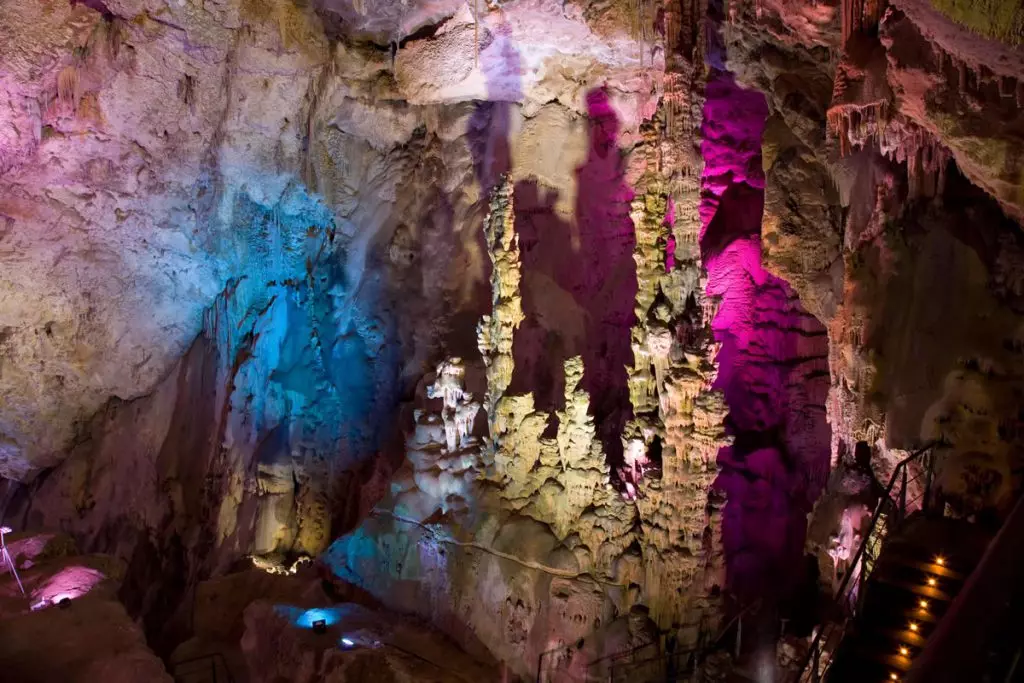
Canelobre Caves
We embark as Julio Verne in the depths of the **Comunitat Valenciana** and we do it by investigating our geological history.
Do you dare to enter an underground world among navigable rivers, stalactites and stalagmites? Come, we'll tell you how and where to do it...
In the land of light and color It is normal that we always want to make plans outdoors, warming up under the Mediterranean sun and enjoying the bonanzas of its climate. But in the Valencian Community there is also life under the earth.
How? We have a wide variety of underground caves that will delight the most avid discoverer. Would you like to feel like a modern caver? Or like Jules Verne and his protagonist Axel entering the depths of the earth?
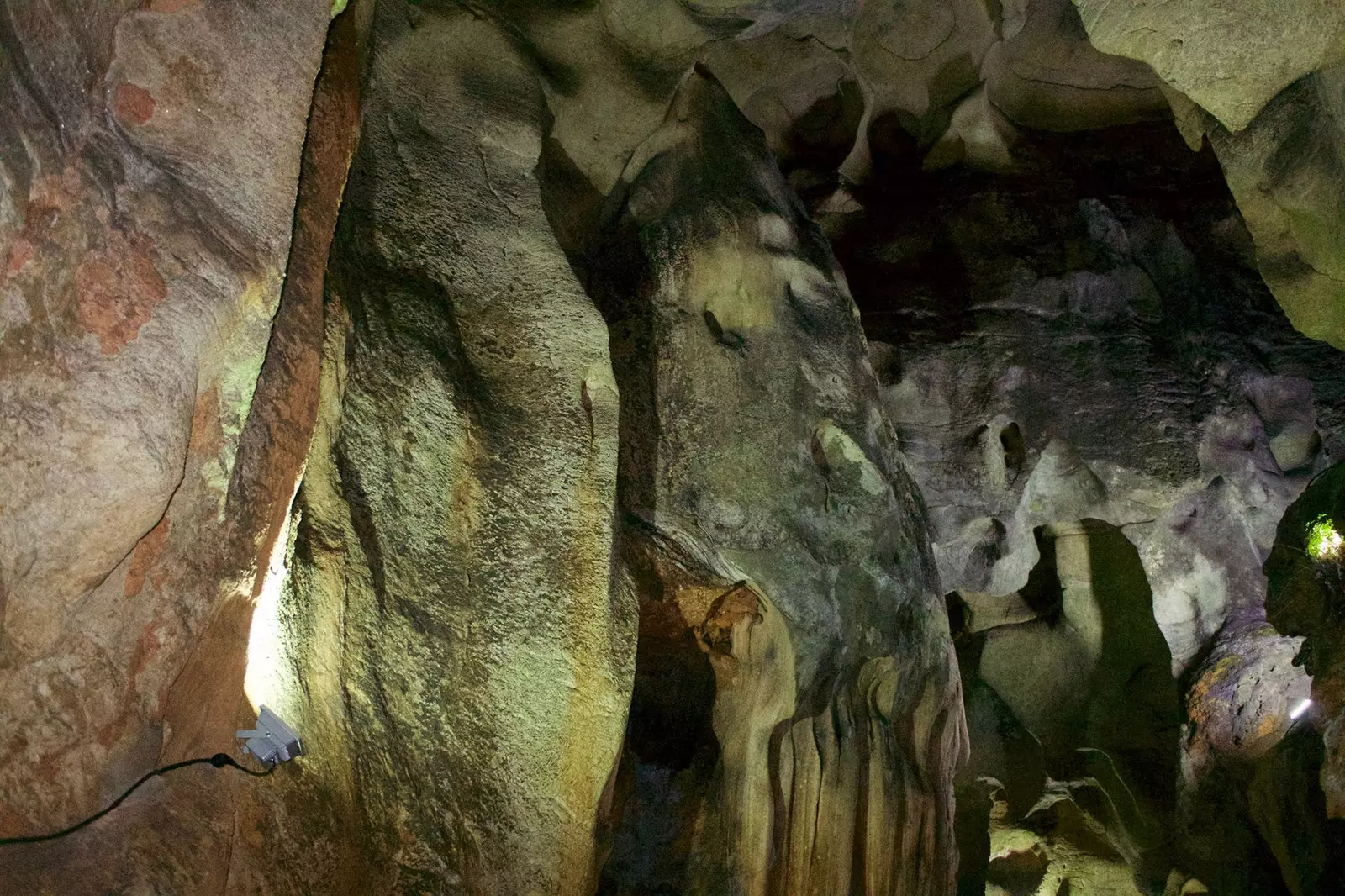
Cave of Skulls
Then on your next visit you have to write down one of the most fascinating activities offered by the Valencian lands: the visit to its caves.
We go through the Valencian Community from south to north, delving into its most famous hidden treasures underground , where water and stone have created whimsical forms to the delight of those who visit them. Hidden from the eyes yes, but equally revealing.
We start our caving route in Alicante . There, in the town of Busot , is one of the most impressive caves in the entire territory.
The Canelobre Caves With an extension of a whopping 80,000 square meters and 70 meters high, they are one of the highest interior vaults in Spain, giving rise to a karstic landscape -when limestone reacts chemically with water- unparalleled.
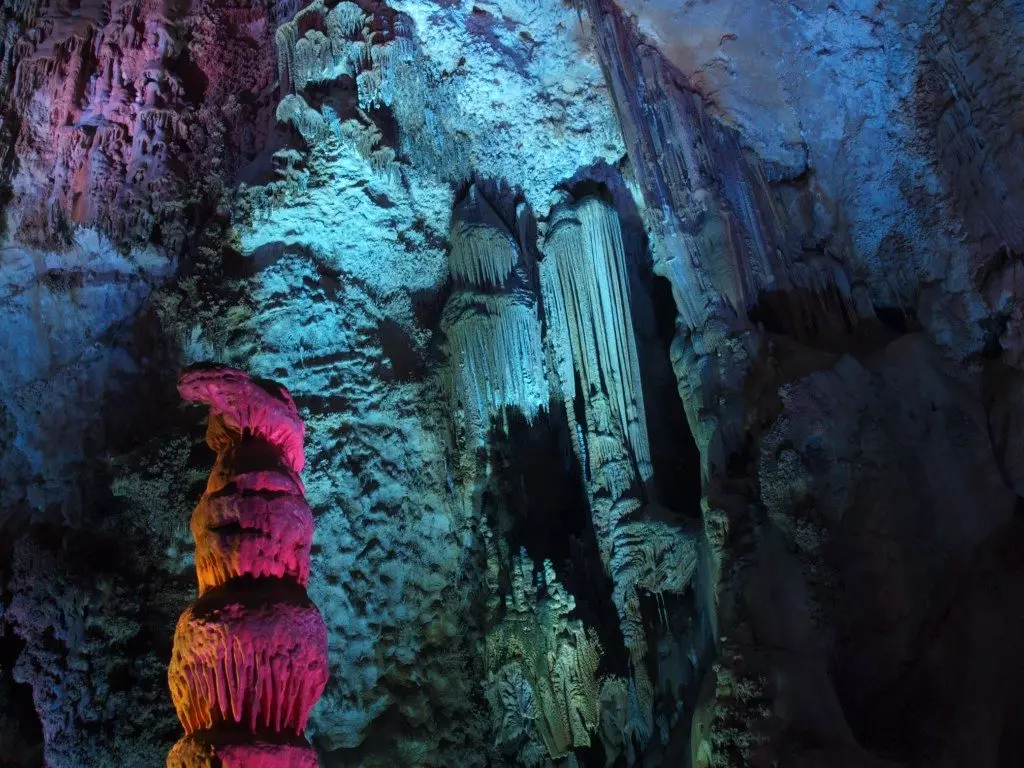
Canelobre Caves
Its walls date from more than 145 million years . Amazing, right? Walk into Cinnamon It will seem to you to do it to another world surrounded by stalactites, stalagmites and formations known as jellyfish.
Undoubtedly, one of its most characteristic formations is known as 'The Holy Family' and 'El Canelobre' , a stalagmite more than 100,000 years old. And there is not everything. Given its large size, the cave has spaces dedicated to scheduling caving activities, as well as serving as a stage for musical performances.
Don't let the name of the next one scare you. In the term of Benidoleig is found the Cave of Skulls , which receives this name because at the time of its discovery, back in the 18th century, the remains of twelve corpses were found there.
Dark stories aside, this cave is especially important thanks to many of the remains that waited to be discovered there. Can you imagine that our ancestors from more than 50,000 years ago spent their days there?
They say that among its formations you can see a crocodile, a map of Spain or some more curious ones such as Don Quixote de la Mancha or President Kennedy . How many do you find?
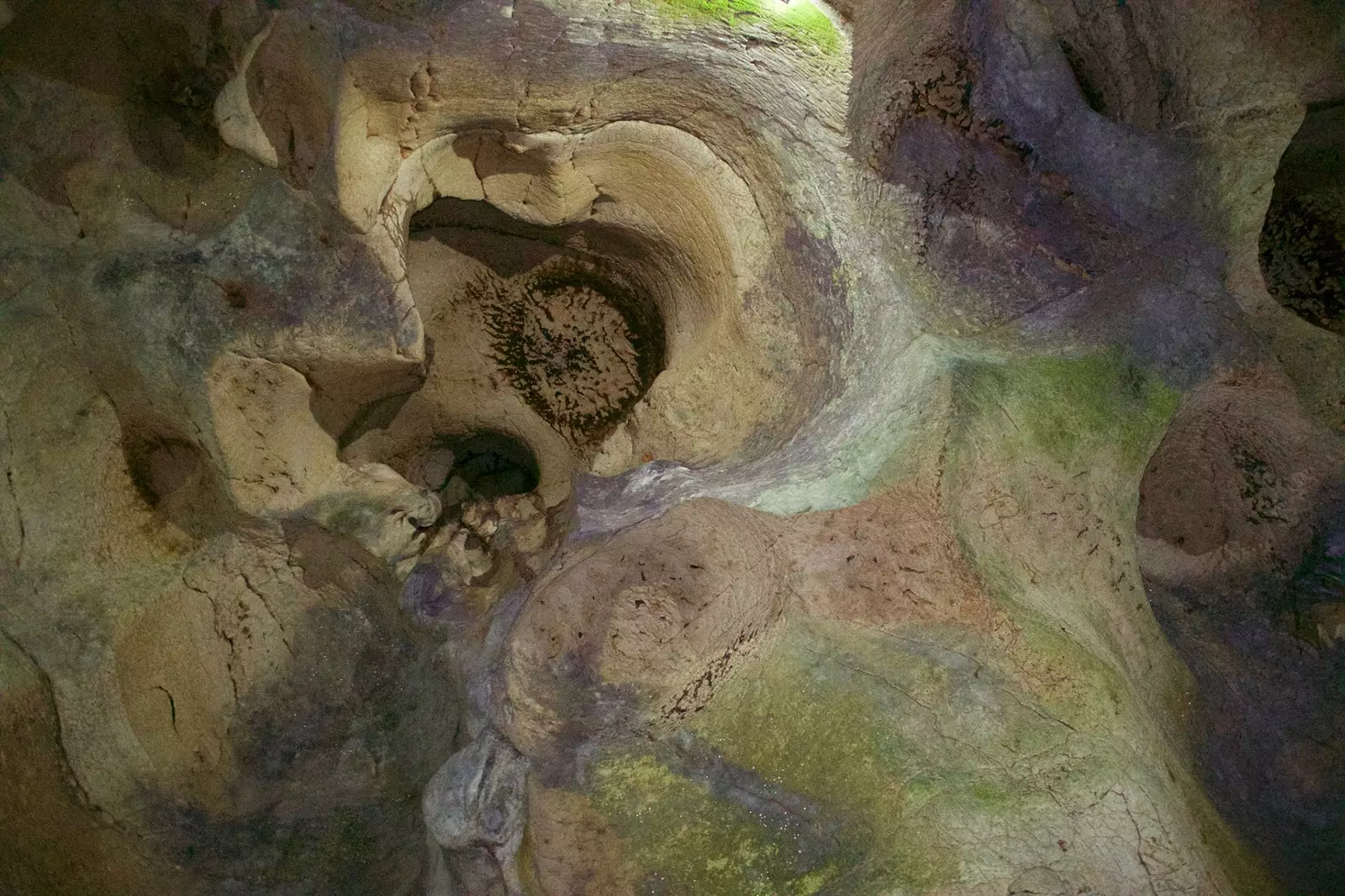
Cave of Skulls
Still in Alicante, the ** Cuevas del Rull in La Vall D'Ebo ** are also worth a visit. One fine day in 1919, Jose Vicente Mengual , known as the Uncle Rull , he was going to hunt rabbits when oh surprise! he came face to face with one of the wonders of Valencian nature.
And thanks to him, today we can continue to enjoy a cave with a route of 220 meters and a drop of 19 metres. The visit is accompanied by a guide who will show you all the landmarks of his genuine underground formations.
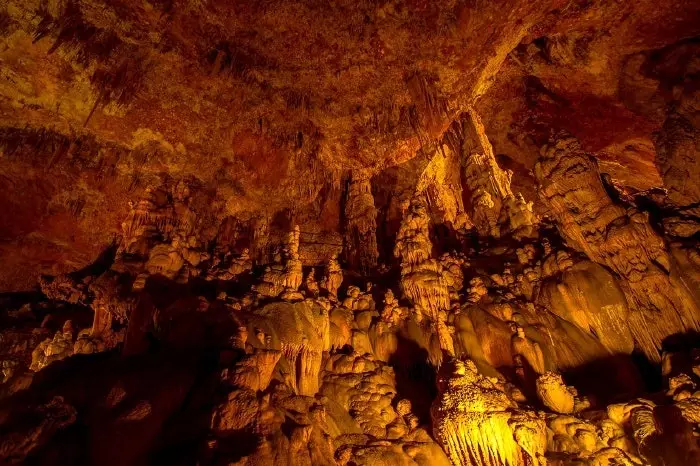
Rull Caves in La Vall D'Ebo
Next stop: the province of Valencia . The Cave of Don Juan is hidden in the municipality of Jalance. On the way to the entrance, you can enjoy the views of the nature of the canyons of the Jucar river. Once you arrive, the fun begins.
The cave has a guided tour of about 45 minutes , crossing its more than 400 meters of rock formations. Formerly it was an outlet of a water course, so it has been modeling for thousands of years what we can visit today.
Not far from there, in the charming municipality of Bocairent, are the ** Covetes dels Moros ,** different from all the ones we have seen so far. It is a set of windows carved into the cliff, of artificial origin. barns? burial chambers?
For many years there was speculation about what their use would be, until the ** MAOVA (Museo Arqueológico D'Ontinyent) ** concluded that they were warehouses for grain from the Andalusian period.
If at first glance it seems that they are unconnected, you should know that almost all of them communicate today through the back. Until some time ago, visiting them was a milestone, so some time ago they installed a metal ladder to access without problems.
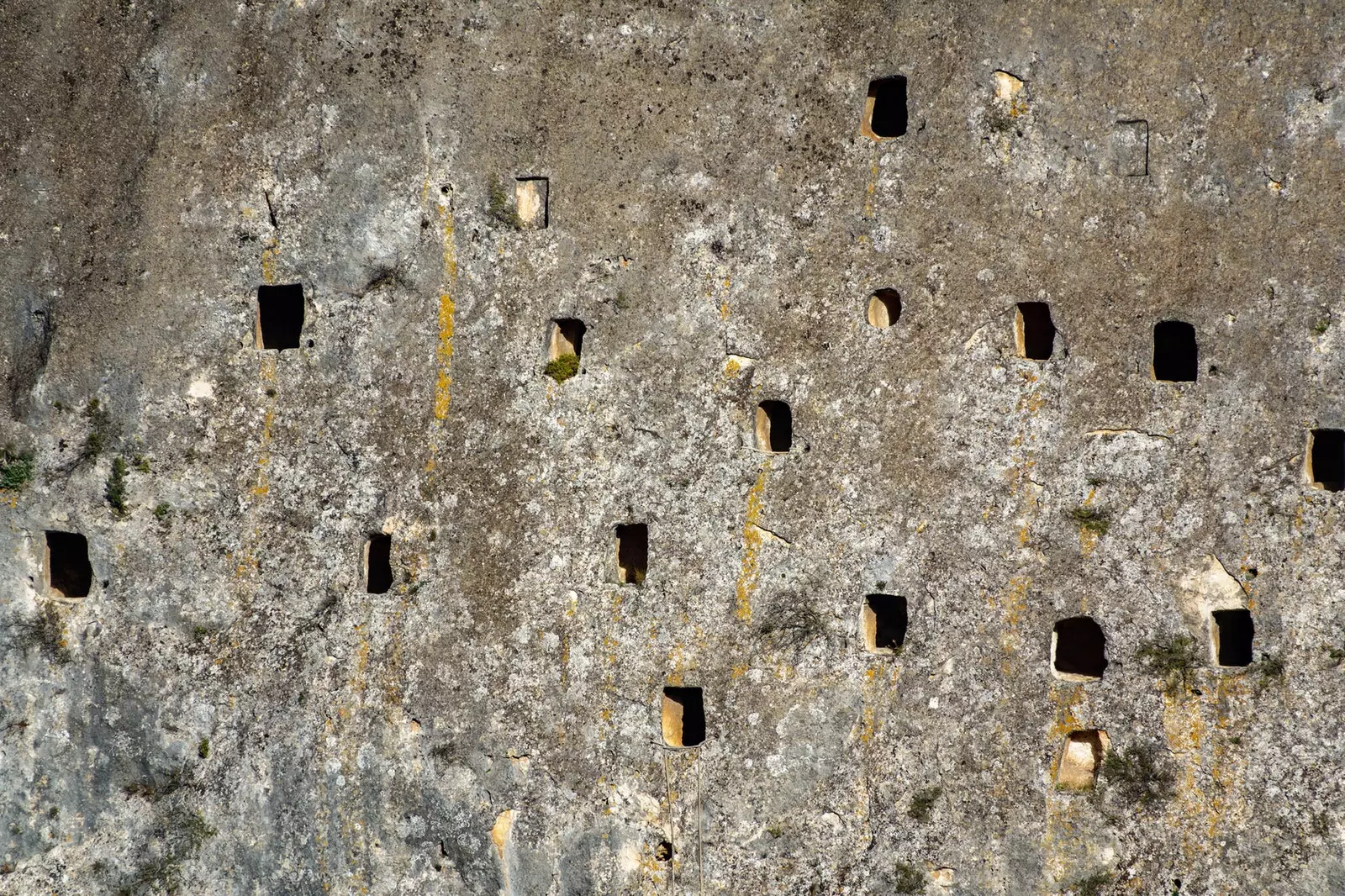
Covetes of the Moors
We ended up near the sea, in Cullera . There is the Dragut Cave . And who was Dragut? They say that a fearsome pirate who attacked the Valencian town of Cullera in 1550. And to commemorate his fateful passage through the area, we find a cave-museum in which to learn more about how these terrifying inhabitants of the Mediterranean lived.
An underground river in Castellón , the last stop on our route through the deepest Region of Valencia. Yes, you read it right. In ** La Vall d'Uixó ** is the underground river of Saint Joseph with a length of almost 3000 meters.
In our immersive visit, we will be able to travel about 800 meters on a small boat, while we delight ourselves with cave paintings and archaeological sites that are about 16,000 years old. The most impressive thing is that to this day, neither the origin of the river nor the end of the grotto is known. What else will be left to discover?
